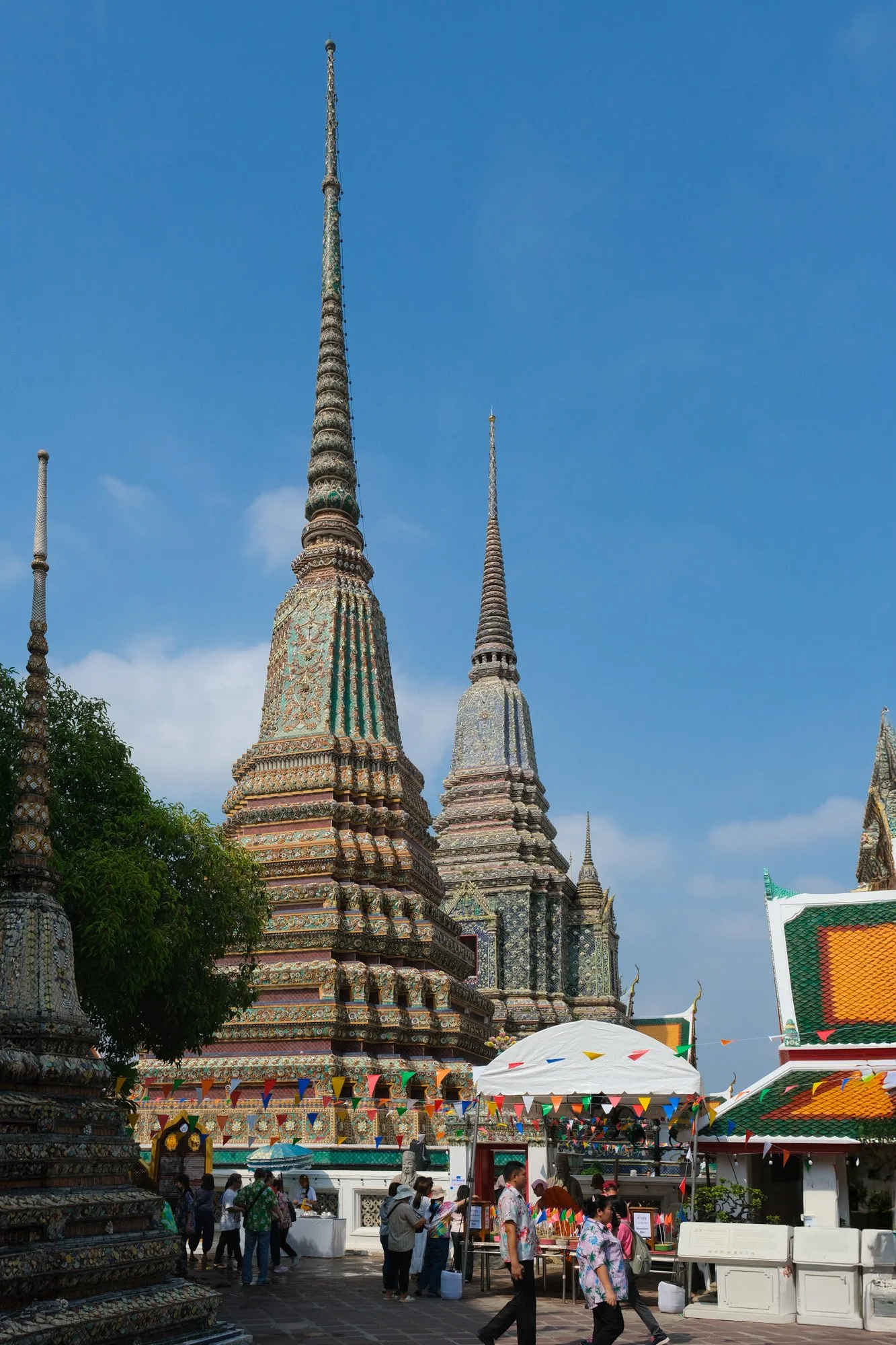The Great Temples of Bangkok
Before our recent trip to Bangkok, I asked my sister and cousin Kevin about all the must-visit spots for our short stay in that Thai capital. Christine used to visit Bangkok frequently for work, and Kevin had lived there with his family for the past decade. I was stunned when they both told me the best way to experience the city was to spend a day in one of the mega malls. Shopping malls are my least favorite place in the world, and I have always avoided them like the plague. That said, I knew I had to be open-minded. Perhaps these malls are as magnificent and fun as everyone claims to be?
After conducting extensive research, we decided to spend an afternoon at ICONSIAM, the second-largest shopping mall in Bangkok. It is supposed to be one of the best, offering everything one would want under the sun. After two and three hours, we had had enough of it. Yes, this is a large mall with plenty of shops and eateries, but I couldn't fathom that it is a major tourist destination. Having worked in Manhattan for over fourteen years, I was neither impressed nor interested in the hundreds of high-end shops there. How are modern shopping malls more appealing than traditional Thai temples?
In the end, I am glad that I enjoyed the cultural sites of Bangkok a whole lot more than the malls. Bangkok is a city of eighteen million with more than four hundred Buddhist temples. Picking out a few temples among them on a short visit was not an easy task. After extensive research, we picked out Wat Pho and Wat Phra Kaew, two of the three most iconic temples in Bangkok. It also just happened that they are a stone’s throw away from one another. Together, the pagodas of these three temples create Bangkok’s iconic skyline.
Wat Pho
The
Wat Phra Chetuphon Wimon Mangkhalaram Rajwaramahawihan
The
The Grand Palace & Wat Phra Kaew
For anyone with limited time in Bangkok, an obvious sightseeing choice would likely be the Grand Palace, the official seat and residence of the Thai monarchy. The enormous complex is heavily fortified due to its significant religious and political importance. Many streets surrounding the palace were cordoned off. As we were dropped off at the entrance by Sanam Luang, a man standing by the guarded entrance greeted us and instructed us that only those with an advanced reservation could be allowed in. Those of us without reservation would have to come back at 3 pm. He then proceeded to introduce other attractions we could visit nearby.
I had done enough traveling to be suspicious. It seemed like he was trying to funnel unsuspecting tourists to nearby attractions and earn a commission from the nearby cab drivers. I hesitated to call his bluff only because a uniformed police officer was standing next to him. Of course, the first thing I did was visit the official website to book tickets. However, the payment could not be processed because of foreign credit cards. After spending fifteen minutes struggling to make online reservations by the side of the road, the same police officer walked by and told us to go inside and get the ticket there. I am not sure I was more surprised by how brazen the illegal tout was or how the police were able to overlook it for so long.
Admission to the palace costs 500 baht for foreigners and is free for Thai nationals. The palace was jammed with visitors, including numerous tour groups. The overall atmosphere of the place was hectic and not particularly dignified. The first section of the palace is the temple complex
Compared to Wat Pho, the temple complex within the palace is filled with gilded structures that must be dazzling on a sunny day.
A replica in concrete of the 12th century Angkor Wat in Kampuchea was conceived by Rama IV in lieu of moving a stone Khmer temple to the Grand Palace. Completed in the reign of Rama V it stands as a hand crafted miniature of a renowned architectural marvel.
The most notable shrine within the palace complex is















